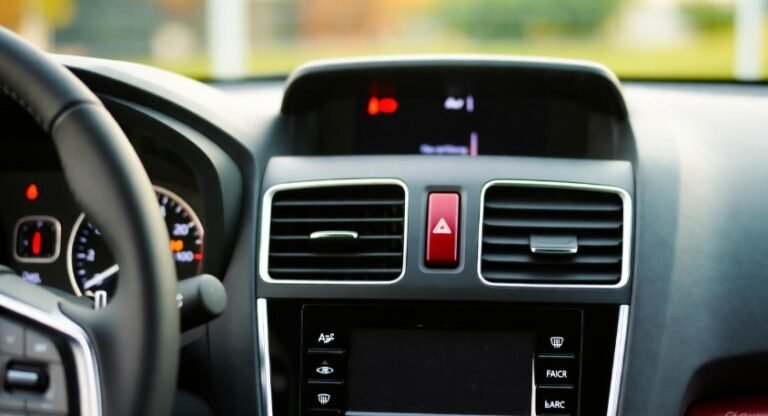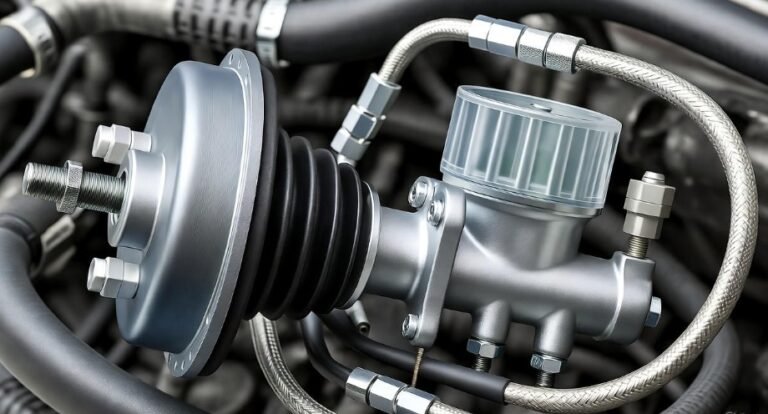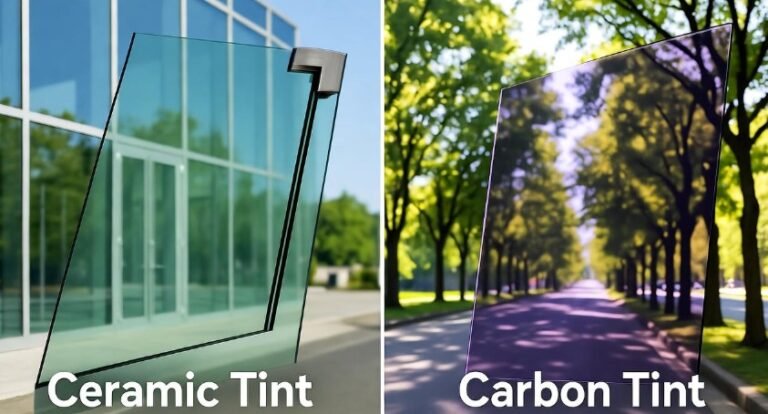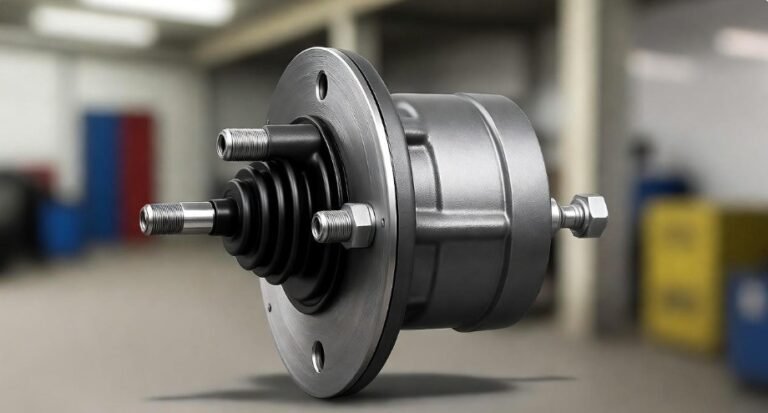Drum Brake and Disc Brake Difference
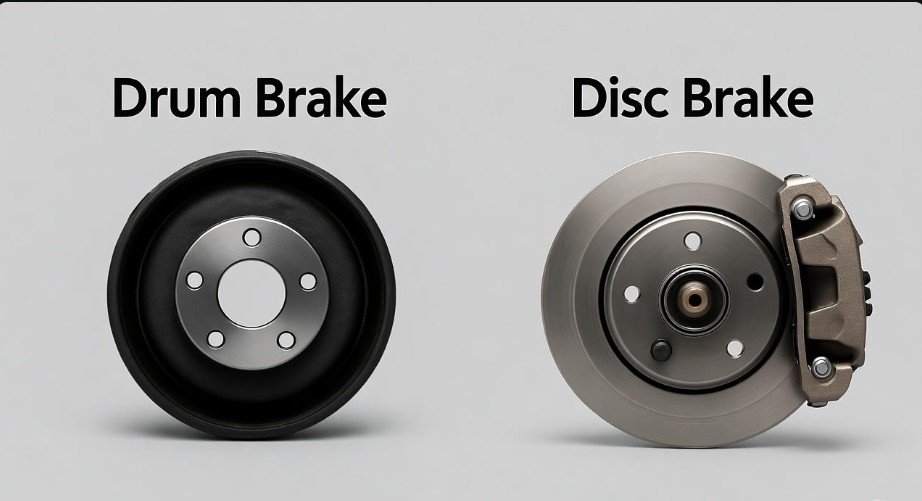
The fundamental drum brake and disc brake difference lies in their design and how they stop your car, with disc brakes offering superior performance and heat dissipation, while drum brakes are often found on older vehicles or as rear brakes on less performance-oriented cars.
Key Takeaways
- Disc brakes use a caliper to squeeze brake pads against a rotor.
- Drum brakes use brake shoes that expand outward against the inside of a drum.
- Disc brakes generally offer better stopping power and fade resistance.
- Drum brakes are simpler and can be more cost-effective to manufacture.
- Understand the drum brake and disc brake difference for informed car maintenance.
- Both systems are crucial for vehicle safety and require regular inspection.
Ever wondered about the humming and whirring sounds your car makes when you brake? Or perhaps you’ve heard terms like “disc brakes” and “drum brakes” and felt a little lost. You’re not alone! Understanding how your car stops is fundamental to safe driving, and the difference between drum brake and disc brake systems can seem complex. But don’t worry, we’re here to break it down for you. At Aautomotives, we believe in making car care simple and straightforward. We’ll guide you through the core mechanics, helping you appreciate the engineering behind your vehicle’s braking power. Let’s explore the world of brakes and clarify the drum brake and disc brake difference so you can drive with confidence.
What Are Brakes and Why Do They Matter?
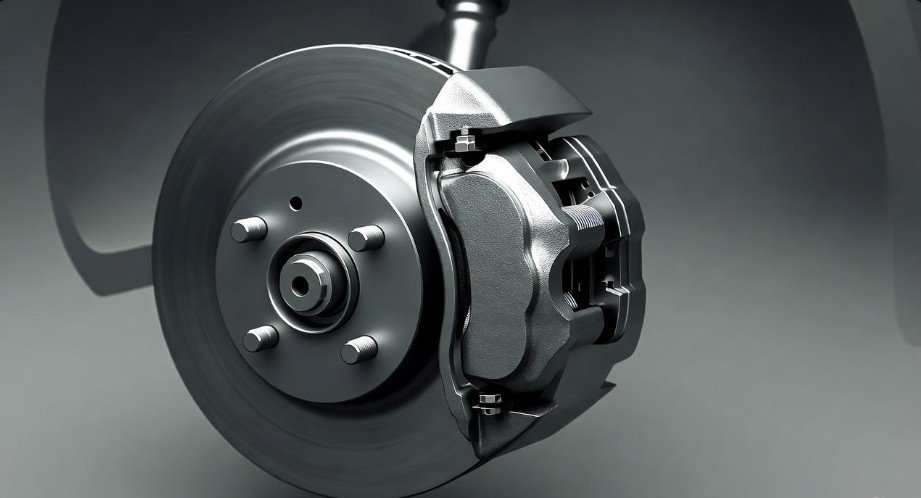
At their core, brakes are the mechanical system that slows down or stops a moving vehicle. They convert the kinetic energy (the energy of motion) of your car into heat energy through friction. This friction is the unsung hero that keeps you and everyone around you safe on the road. Without effective brakes, driving would be incredibly hazardous. In the United States, a well-functioning braking system is not just about convenience; it’s a critical safety requirement mandated by law. Regular maintenance and understanding how your braking system works are essential for every car owner, whether you’re cruising down an American highway or navigating city streets.
The Drum Brake: A Classic Design
The drum brake is one of the oldest and most traditional braking systems. You’ll often find them on the rear wheels of older vehicles or on less performance-oriented cars today. Its design is quite ingenious, relying on a circular, hollow drum that rotates with the wheel. Inside this drum, there are two curved brake shoes. When you press the brake pedal, hydraulic pressure pushes these shoes outward. This outward expansion forces the brake shoes to press against the inner surface of the rotating drum. The friction generated between the shoes and the drum slows down the rotation of the wheel, thus slowing down your vehicle.
The process is driven by the vehicle’s hydraulic system. When you push the brake pedal, you activate the master cylinder, which sends brake fluid under pressure through brake lines to the wheel cylinders. These wheel cylinders contain pistons that are forced outward, pushing the brake shoes into contact with the drum. The drum itself is anchored to the vehicle’s suspension or axle.
How a Drum Brake Works:
- Wheel Cylinder Activation: When brake fluid is pressurized, it pushes pistons in the wheel cylinder.
- Shoe Expansion: These pistons force the brake shoes outwards.
- Friction Generation: The brake shoes press against the inside of the rotating brake drum.
- Slowing Down: The friction between shoes and drum converts kinetic energy into heat, slowing the wheel.
- Return Springs: Springs pull the shoes back to their resting position when brake pressure is released.
While drum brakes have been around for a long time and are effective, they do have some limitations. One of the main drawbacks is their susceptibility to “brake fade.” This occurs when the brakes overheat, reducing their effectiveness. In humid conditions or after repeated heavy braking, water can get trapped inside the drum, further impairing their performance. However, their simplicity and lower manufacturing cost have kept them relevant for certain applications.
The Disc Brake: Modern Performance
Disc brakes are the more modern and typically higher-performing braking system. You’ll find them on the front wheels of most cars and on all four wheels of performance vehicles and many newer models. The design is quite different from drum brakes. A disc brake system consists of a rotor (a flat, disc-shaped metal plate that rotates with the wheel) and a caliper that straddles the rotor. Inside the caliper are brake pads. When you apply the brakes, hydraulic pressure is sent to the caliper, which then forces the brake pads to clamp down onto both sides of the spinning rotor.
This clamping action creates friction, slowing the rotor and, consequently, the wheel. The rotor is exposed to the air, which helps it dissipate heat much more effectively than a drum brake. This superior heat dissipation is a key reason why disc brakes are less prone to brake fade, making them ideal for situations requiring frequent or hard braking, like those encountered in hilly terrain or during spirited driving.
How a Disc Brake Works:
- Hydraulic Pressure: Brake fluid is pressurized and sent to the caliper.
- Piston Movement: Pistons within the caliper push the brake pads.
- Rotor Clamping: Brake pads are squeezed firmly against the rotor.
- Friction and Braking: Friction between pads and rotor slows the wheel.
- Heat Dissipation: The rotor’s open design allows for efficient cooling.
Disc brakes generally offer more consistent and powerful braking. They are also easier to service and inspect. The open design allows for better cleaning of the braking surface, reducing the impact of dust and debris. For these reasons, disc brakes have become the standard for most automotive applications demanding high performance and reliability.
Drum Brake vs. Disc Brake: A Direct Comparison
To truly understand the drum brake and disc brake difference, a direct comparison highlights their strengths and weaknesses. This comparison is crucial for anyone looking to understand their vehicle’s maintenance needs or when considering upgrades.
| Feature | Drum Brake | Disc Brake |
|---|---|---|
| Mechanism | Brake shoes expand outward against an internal drum. | Brake pads are squeezed inward against an external rotor. |
| Heat Dissipation | Poor; prone to brake fade, especially when wet or hot. | Excellent; open design allows for efficient cooling. |
| Stopping Power | Generally less powerful and consistent. | More powerful and consistent braking performance. |
| Self-Energizing Effect | Can have a self-energizing effect, making them feel stronger initially. | No significant self-energizing effect. |
| Friction Material | Brake shoes. | Brake pads. |
| Exposure to Elements | Enclosed; can trap water and debris, affecting performance. | Open design; more exposed to elements but also self-cleaning. |
| Typical Application | Rear wheels of some cars, older vehicles, heavy-duty trucks. | Front wheels of most cars, all wheels on performance vehicles. |
| Maintenance/Inspection | More complex to inspect and service. | Easier to inspect and service. |
| Cost | Generally less expensive to manufacture. | Typically more expensive to manufacture. |
The “self-energizing” nature of drum brakes means that the friction of the shoe against the drum can create a wedge effect, increasing the pressure and thus the braking force. This can make them feel quite strong when applied lightly. However, this effect also contributes to their tendency to grab or become less predictable under heavy use compared to disc brakes.
Advantages of Disc Brakes
The widespread adoption of disc brakes, especially on the front wheels, is no accident. Their advantages are significant for modern driving:
- Superior Stopping Power: Disc brakes provide more consistent and powerful braking, directly translating to shorter stopping distances. This is vital for emergency situations and everyday driving safety.
- Better Fade Resistance: Due to their open design, disc brakes dissipate heat much more effectively. This means they maintain their braking performance even during prolonged or demanding braking scenarios.
- Consistent Performance in Wet Conditions: While no brake system is entirely immune to water, the open design of discs allows water to be more easily flung off the rotor by centrifugal force, leading to more reliable braking in rain compared to drum brakes, which can trap water internally.
- Easier Maintenance and Inspection: The caliper design of disc brakes makes it straightforward to visually inspect the thickness of the brake pads and the condition of the rotor. Replacing pads is also generally a simpler process.
- Self-Cleaning: The rotation of the rotor helps to clear away dust and debris from the braking surfaces, maintaining optimal friction.
These benefits are why you’ll see disc brakes as standard on the front of nearly every car sold in the USA today. The front brakes handle a larger portion of the braking force (typically around 70-80%), making their performance and reliability paramount.
Advantages of Drum Brakes
Despite the dominance of disc brakes, drum brakes still hold value in specific applications due to their unique advantages:
- Lower Manufacturing Cost: Drum brakes are generally less expensive to produce than disc brakes, making them a cost-effective solution for entry-level vehicles or less demanding applications.
- Integrated Parking Brake: Many drum brake systems have a built-in mechanism for the parking brake (also known as the emergency brake). The brake shoes can be mechanically actuated to hold the vehicle in place when parked. This integration simplifies the overall braking system.
- Protection from Elements: The enclosed nature of drum brakes offers some protection from dirt, dust, and road salt, which can be beneficial in harsh environments.
- “Self-Energizing” Effect: As mentioned, this effect can provide a seemingly stronger initial bite, which some drivers might prefer.
While these advantages exist, the overall performance and safety benefits of disc brakes often outweigh them for most everyday vehicles. The drum brake and disc brake difference is most pronounced in their ability to handle heat and maintain consistent braking force.
Common Brake System Issues
Understanding the drum brake and disc brake difference can help you identify potential issues. Both systems are subject to wear and tear over time. Common symptoms that indicate your brakes need attention include:
- Squealing or Grinding Noises: This is often the first sign that your brake pads or shoes are worn out and need replacement. Grinding usually indicates metal-on-metal contact, which can damage rotors or drums.
- Vibrations or Pulsations: If you feel vibrations in the brake pedal or steering wheel when you brake, it could be due to warped rotors (in disc brake systems) or uneven wear.
- Soft or Spongy Brake Pedal: A brake pedal that feels soft or goes all the way to the floor may indicate air in the brake lines or a leak in the hydraulic system. This is a serious safety concern.
- Car Pulling to One Side: If your vehicle pulls to the left or right when you brake, it could be a sign of uneven brake pad wear, a stuck caliper, or a problem with brake hoses.
- Burning Smell: A burning smell during or after braking can indicate overheating, often a sign of brake fade or a component dragging.
If you notice any of these symptoms, it’s crucial to have your brakes inspected by a qualified mechanic. For those in the USA, the National Highway Traffic Safety Administration (NHTSA) provides valuable resources on vehicle safety, including brake system maintenance. You can find information on their website regarding recalls, safety standards, and tips for maintaining your vehicle’s braking system.
Pro Tip: Never ignore strange noises or sensations when braking. Early detection of brake issues can prevent more costly repairs and, most importantly, ensure your safety on the road.
Maintaining Your Brakes
Regular maintenance is key to ensuring both drum and disc brake systems function optimally. Here’s a general guide:
- Visual Inspections: Periodically check your brake pads and rotors (for disc brakes) or look for wear indicators on drum brake systems. Most auto parts stores in the USA offer free brake inspections.
- Brake Fluid Checks: Brake fluid is critical for hydraulic brake systems. It should be checked regularly for level and condition. Over time, brake fluid can absorb moisture, reducing its effectiveness. Flushing and replacing brake fluid according to your vehicle manufacturer’s recommendations is essential.
- Listen for Noises: Pay attention to any new sounds when braking. Squeaks, grinding, or even loud hisses can signal a problem.
- Feel the Pedal: Notice how your brake pedal feels. A spongy or high pedal can indicate issues that need immediate attention.
- Professional Service: Follow your vehicle’s maintenance schedule for professional brake inspections, typically recommended every 12,000 to 20,000 miles, or as per your owner’s manual.
Understanding the drum brake and disc brake difference can empower you to have more informed conversations with your mechanic about what services your vehicle might need.
Frequently Asked Questions (FAQs)
Q1: Are disc brakes always better than drum brakes?
For most modern vehicles and driving conditions, disc brakes offer superior performance, especially in terms of stopping power, heat dissipation, and consistency. However, drum brakes are still effective and cost-efficient for lighter-duty applications or as rear brakes where they are less critical for initial stopping force.
Q2: How often should I replace my brake pads and rotors?
Brake pad and rotor replacement intervals vary greatly depending on driving habits, vehicle type, and the quality of the parts. On average, front brake pads might last 30,000-70,000 miles, and rotors might last twice as long. Rear brakes, especially drums, can last longer. Always consult your vehicle’s service manual or a trusted mechanic.
Q3: Can I convert my drum brakes to disc brakes?
Yes, it’s possible to convert drum brakes to disc brakes, especially on the rear of a vehicle. Many aftermarket kits are available. However, this can be a complex and expensive modification, and it’s essential to ensure the system is installed correctly to maintain proper braking balance and safety.
Q4: What is brake fade, and how does it affect drum brakes?
Brake fade is a temporary loss of braking ability caused by overheating. In drum brakes, the enclosed design traps heat, and the friction material can become less effective at very high temperatures. Water can also get trapped inside, further reducing performance. Disc brakes dissipate heat much better, making them far less susceptible to fade.
Q5: Is it safe to drive with worn brake pads?
No, it is not safe to drive with severely worn brake pads. Worn pads significantly reduce your braking effectiveness, increasing stopping distances and the risk of accidents. In some cases, worn pads can also damage the rotors or drums, leading to more expensive repairs.
Q6: How does anti-lock braking systems (ABS) work with disc and drum brakes?
ABS is an electronic system that prevents wheels from locking up during hard braking. It works by rapidly pulsing the brake pressure to individual wheels. ABS can be integrated with both disc and drum brake systems, although it is more commonly associated with disc brakes due to their superior responsiveness and performance.
Conclusion
Understanding the drum brake and disc brake difference is fundamental for any car owner who wants to be informed about their vehicle’s safety systems. While both aim to stop your car, disc brakes utilize a caliper to squeeze pads against a rotor, offering superior stopping power and heat dissipation, making them the standard for modern vehicles. Drum brakes employ brake shoes that expand outward against the inside of a drum, a simpler and more cost-effective design often found on older cars or rear axles. Regular inspection, maintenance, and heeding any warning signs are crucial for ensuring your braking system, whether drum or disc, is in top condition. By staying informed, you drive smarter, safer, and with greater confidence on every journey across the USA.

